Tokyo Street Food
The street food scene in Tokyo is often centered around train stations and major pedestrian areas. As such a fast-paced city, it’s an ideal place to eat on the go. Here are 17 of the best sweet and salty items to try, most of which will cost you less than 500 yen. A similar version of this post first appeared on USA Today 10Best.
Senbei
These crunchy, traditional Japanese rice crackers come in different shapes and sizes. Some are savory, while others are sweet. Wasabi, seaweed, sesame, and soy are the most common flavors. Senbei are often served with green tea. Unlike many Japanese street foods, they have a long shelf life.
Oinarisan
Also known as inari sushi, oinarisan is a rice ball stuffed inside a deep-fried tofu bag. That’s the simple version, but you can also add toppings. Most are similar to what you would get with traditional sushi. As traditional sushi is omnipresent in Japan, inari offers an affordable variation on Japan’s most famous dish.
Taiyaki
These fish-shaped waffle cakes started in Meji-era Tokyo. They are now omnipresent throughout Japan. Sweetened azuki red bean paste is the most common filling, but cheese, chocolate, custard, sweet potato, and various seasonal varieties are gaining popularity as well. The outer shell has a hint of sweetness and can be slightly cruncy, depending on how fresh they are. If you have the time, ask the vendor how to eat it. According to the Japanese, how you eat taiyaki says a lot about your personality.
Karaage
The Japanese have their own version of what is commonly referred to in America as popcorn chicken (salt and pepper chicken in Taiwan). The Japanese version is dipped in potato starch and then deep-fried. If you eat karaage plain, you’ll likely notice hints of ginger and garlic. Depending on where you go, they may be served cold. If you plan to eat them on the spot, ask your server to heat them for you.
Takoyaki
These fluffy octopus balls, which are now ubiquitous in every Japanese city, were first served in Osaka back in 1935. Tako is the Japanese word for octopus. These delicate, gooey ball-shaped cakes are best eaten in one bite. They’ll likely be served with chopsticks, but be careful as they come apart easily. If you’re ordering these because you love octopus, you may be a bit underwhelmed, as the actual octopus pieces are almost too small to chew. Wheat flour and tempura batter are actually the main ingredients. Most batters include ginger and green onions. More upscale locations will offer some different variations, but takoyaki are the original.
Kobe Beef Skewer
If you want to try the world-famous Japanese Kobe beef, but don’t want to sit down for an hour-long dinner and pay premium restaurant prices for an already premium cut of meat, just buy it in the street! Skewers are a popular Japanese street food item, so all you need to do is find a vendor that sells Kobe beef.
Anyone who has it will flaunt it. You’ll likely see a large sign advertising Kobe beef skewers for around 1,200 yen. If you decide you like the savory, rich taste of Kobe beef, then a visit to a proper restaurant will be the next step.
Cremia
The Japanese are proud of their soft ice cream. Cremia is sweet, but not as sweet as typical ice cream in the Americas or gelato in Europe. Typical cremia is made with rich Hokkiado cream and milk, which has a fat content of 12%. It’s not unusual to see a soft ice cream vendor selling more than 20 different flavors out of a blink-and-you’ll-miss it-looking stand. Although each of Japan’s 47 prefectures has its’ most popular flavors, chestnut, purple sweet potato, and cherry blossom are local favorites in Tokyo.
Kibi Dango
These sweet and gooey rice flour dumplings are among the most versatile street foods in Japan. They’re bite-sized and typically come three or four to a skewer. Different dango come with different coatings. Kibi dango (named after the ancient Kibi province) are coated with roasted soybean powder, known as kinako. They’re a year-round snack, with different varieties being more popular according to the given season. Most go well with green tea.
Ikayaki
“Ika” means squid, while “yaki” means grilled. This paper-thin, salty Japanese street snack has a flaky outer edge and chewy middle.
The raw tentacles are dipped in potato starch and then pressed flat on the grill, which is first coated with cooking oil. Unlike the more popular takoyaki (balls of fried or grilled octopus), it’s a lighter snack, which will leave room for some of the other items on this list.
Melonpan with ice cream
Melonpan is a sweet bun made from enriched dough coated with a layer of crisp cookie dough. The result is a crunchy outside with a softer inside. It tastes nothing like melon, but gets its name from the bread’s melon-like shape.
Some street vendors sell melonpan stuffed with ice cream, which make it an ideal dessert. In recent years, certain bakers have even started to infuse their bread with actual melon flavor. Compared to most Japanese street snacks, melonpan is on the larger and heavier side, especially when you add the scoop of ice cream. It’s the takoyaki of sweets.
Age Manju
Manju refers to buns made of buckwheat, rice powder and flour, while age means fried.
Red bean paste is omnipresent in Japanese street snacks and it’s a common filling in age manju. Matcha/green tea are other common variations. All are sweet, though.
If you’re looking to save room for other delicious Japanese street foods, try the regular manju, which will either be baked or steamed, with similar fillings.
Risotto Croquette/Kobe Croquette
Korokke are a perfect example of how the Japanese are able to take food from around the world and put their own unique spin on it. Like they did with ramen (originally Chinese), the Japanese have taken this late 19th-century French invention and made it one of the more popular Tokyo street foods.
Their usually round, deep-fried version is crispy and flaky on the outside and gooey on the inside. Potato croquettes are the most popular, probably followed by the beef croquettes, which are actually potato croquettes mixed with beef. Some vendors (like Kobe Croquettes) offer seafood versions. Although you can eat them with chopsticks, the Japanese often eat korokke with their hands. Be warned as they can get a bit messy.
Imokin
Like many Japanese street foods, imokin are sweet potato-based. The sweet potato paste is coated with wheat flour and then fried. They are typically served at room temperature. The texture is jello-like. Think jello with pieces of solidified sweet potato.
Omusubi/Onigiri
These Japanese rice balls have similar ingredients to sushi but typically use plain white rice without vinegar. Triangular-shaped ones are the most popular, but some are round as well. They are usually wrapped in seaweed, and most are stuffed with a protein such as teriyaki chicken or salted fish. As the trend catches on, the ingredients (and varieties of rice used) continue to get more exotic. The terms omusubi and onigiri are used interchangeably.
Calbee + Potato Chips
Calbee is one of Japan’s leading snack food companies, and they have multiple locations in Tokyo. Check out their small storefront on crowded Takeshita Street in the Shibuya district, where they sell potato chips with various toppings, such as honey, maple, butter and chocolate.
Most toppings are salty and sweet, while some change with the seasons. If you take a liking to them, you can find their brand items in most stores around the country.
Nure Okaki
Nure means wet in Japanese. Nure okaki are wet rice crackers. While senbei are dry and typically round, these are moist and rectangular.
Ningyo-yaki
These are a smaller, yet more intricate version of the famous taiyaki. Like their larger siblings, ningyo-yaki are waffles stuffed with red bean paste. Ningyo means mermaid or doll, and these bite-sized confections are often referred to as doll cakes. They are molded as different dolls and often come pre-wrapped.
Want to keep the conversation going? Let’s connect via my social links below.
Like this post and want to share? Planning a trip to Tokyo and need a convenient place to stay? Pin it!
All pictures were shot with a Panasonic Lumix ZS100 4K Point and Shoot Camera with the exception of any Instagram pics.
Have you been to Tokyo? If so, what did you eat? Leave a comment below!

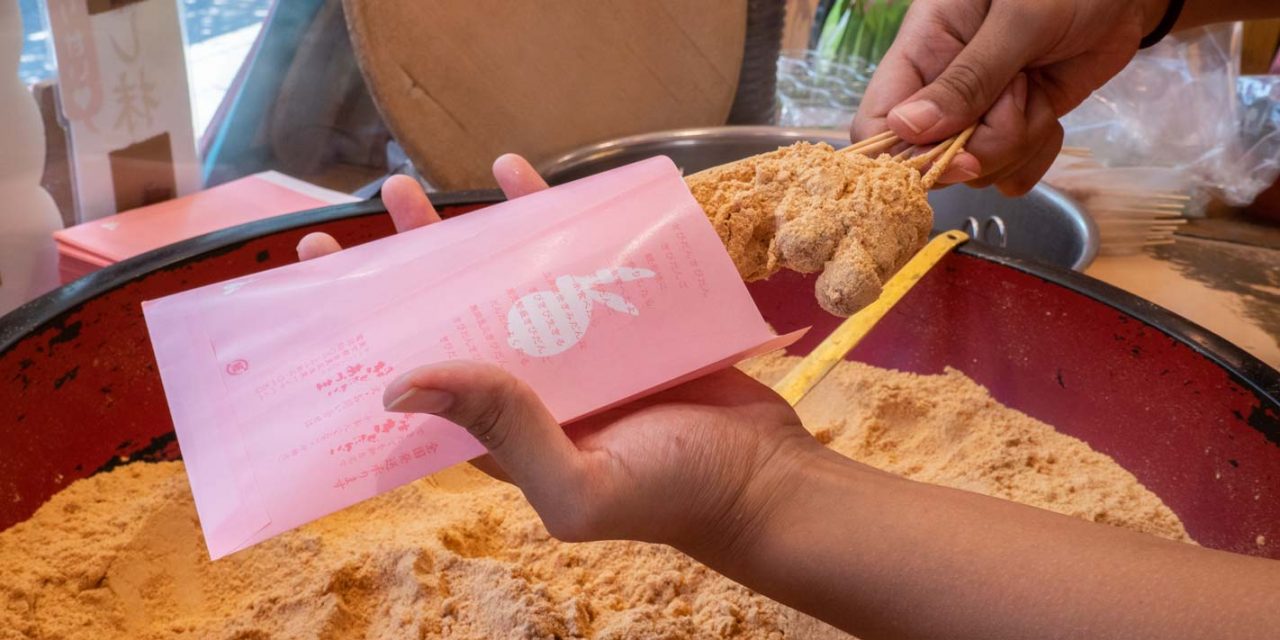
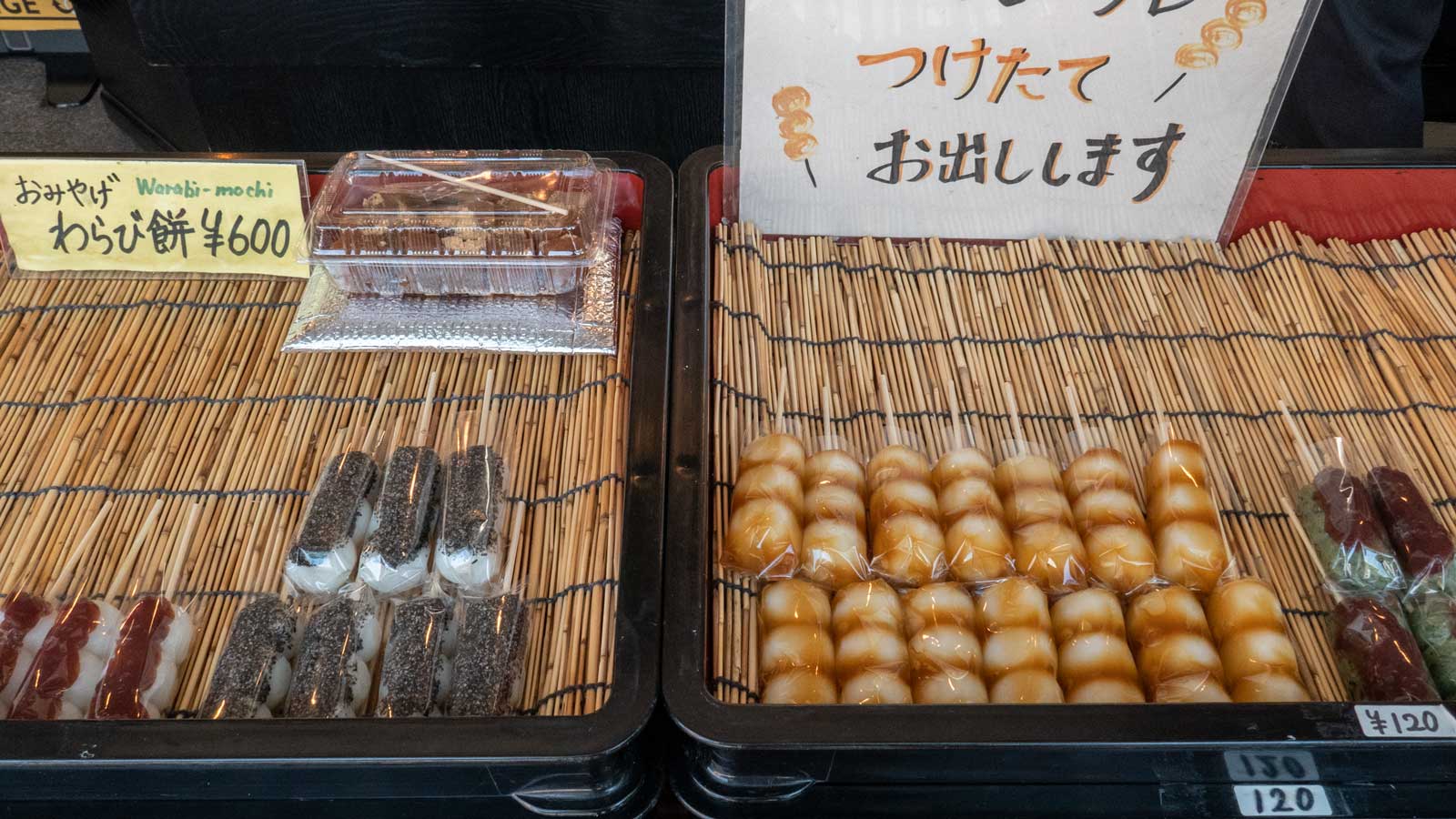
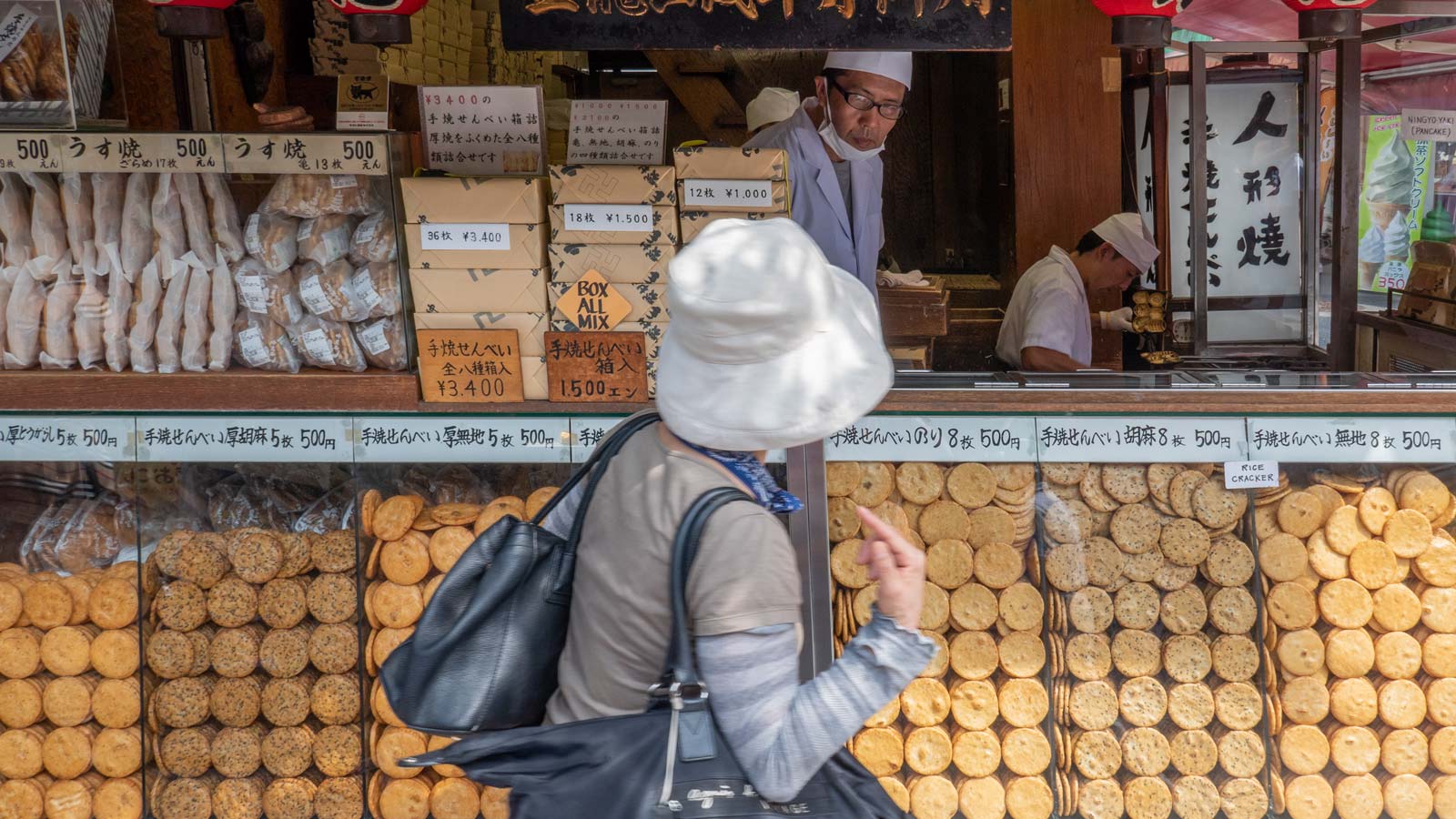
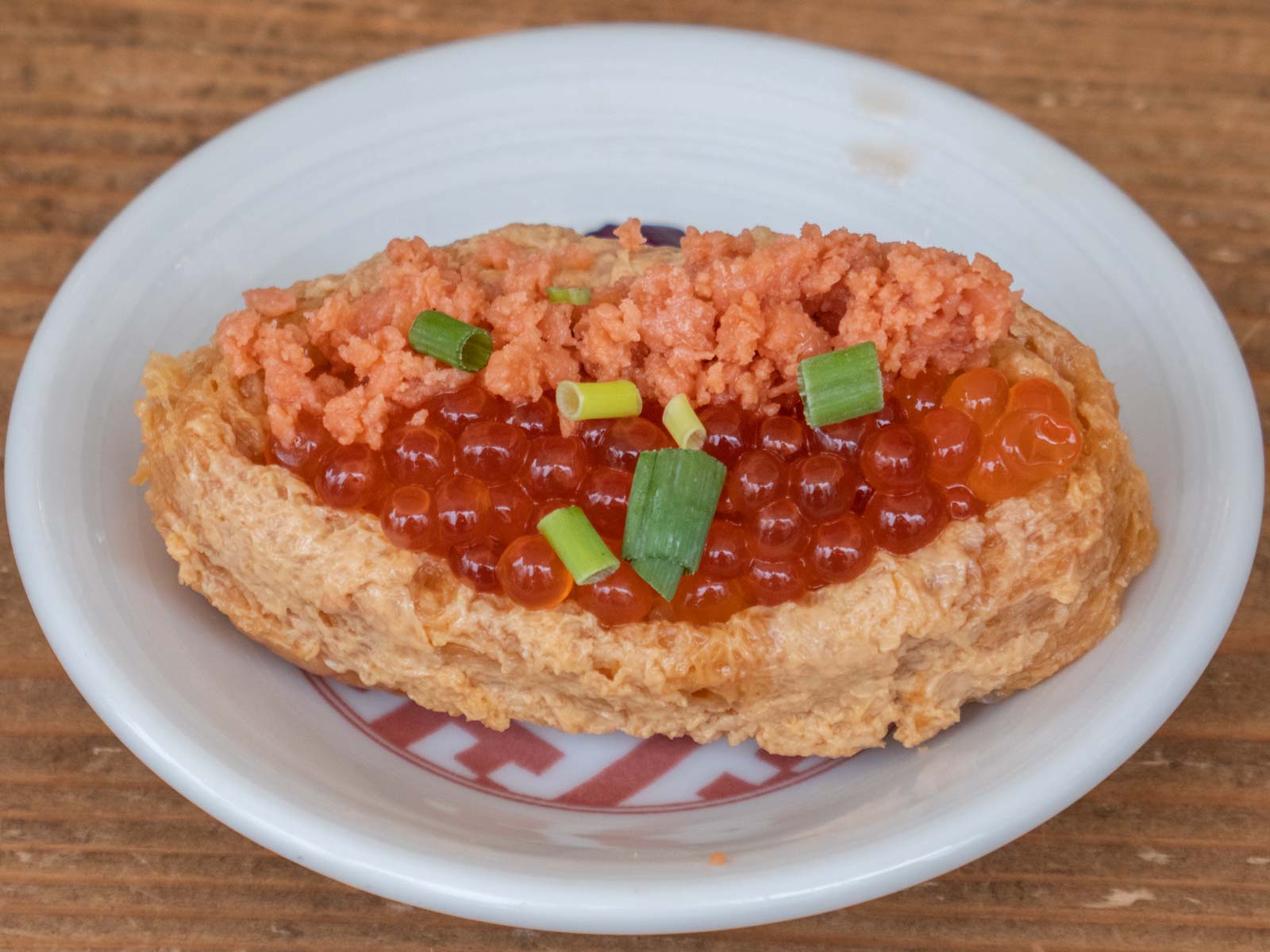


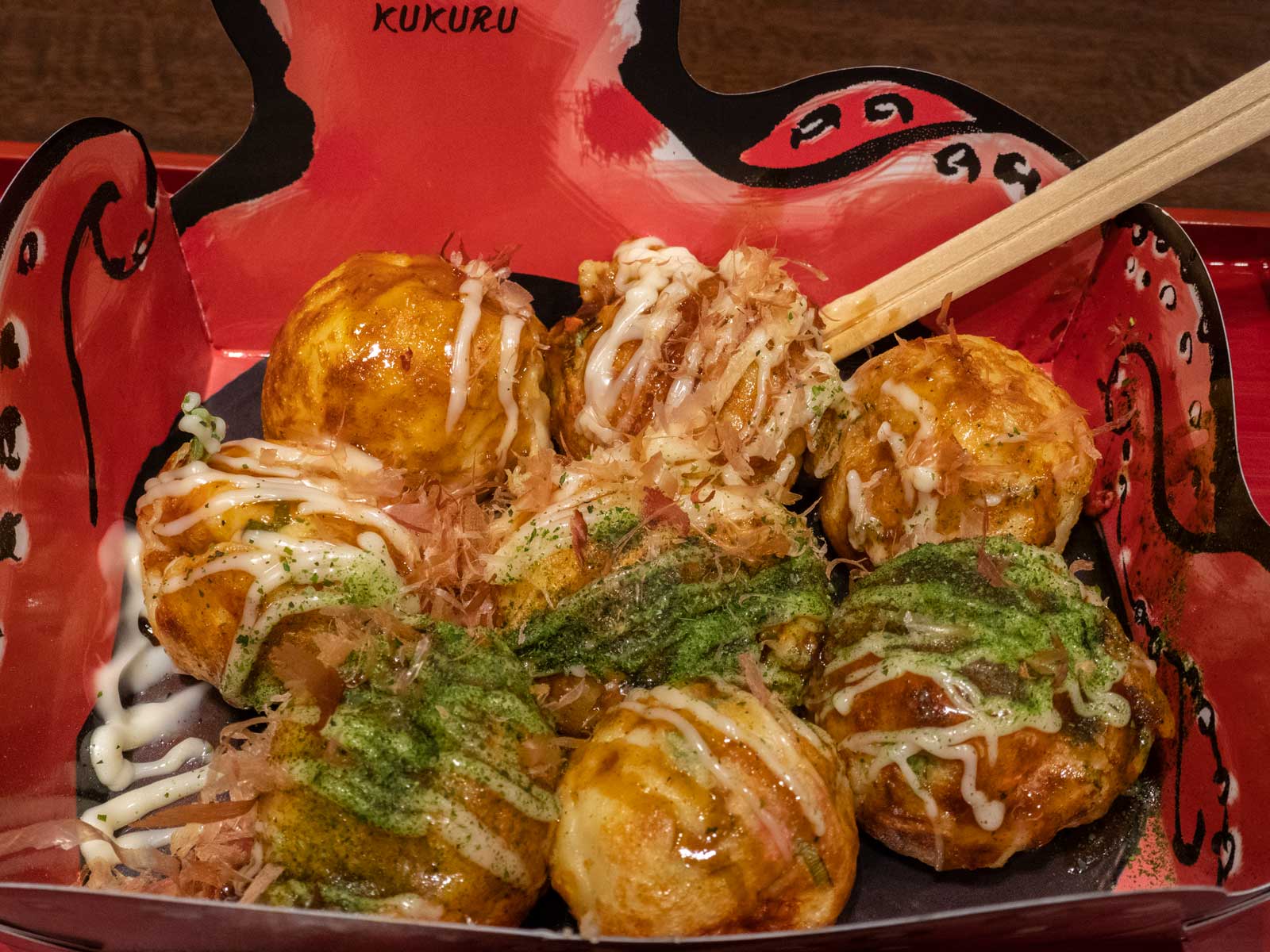
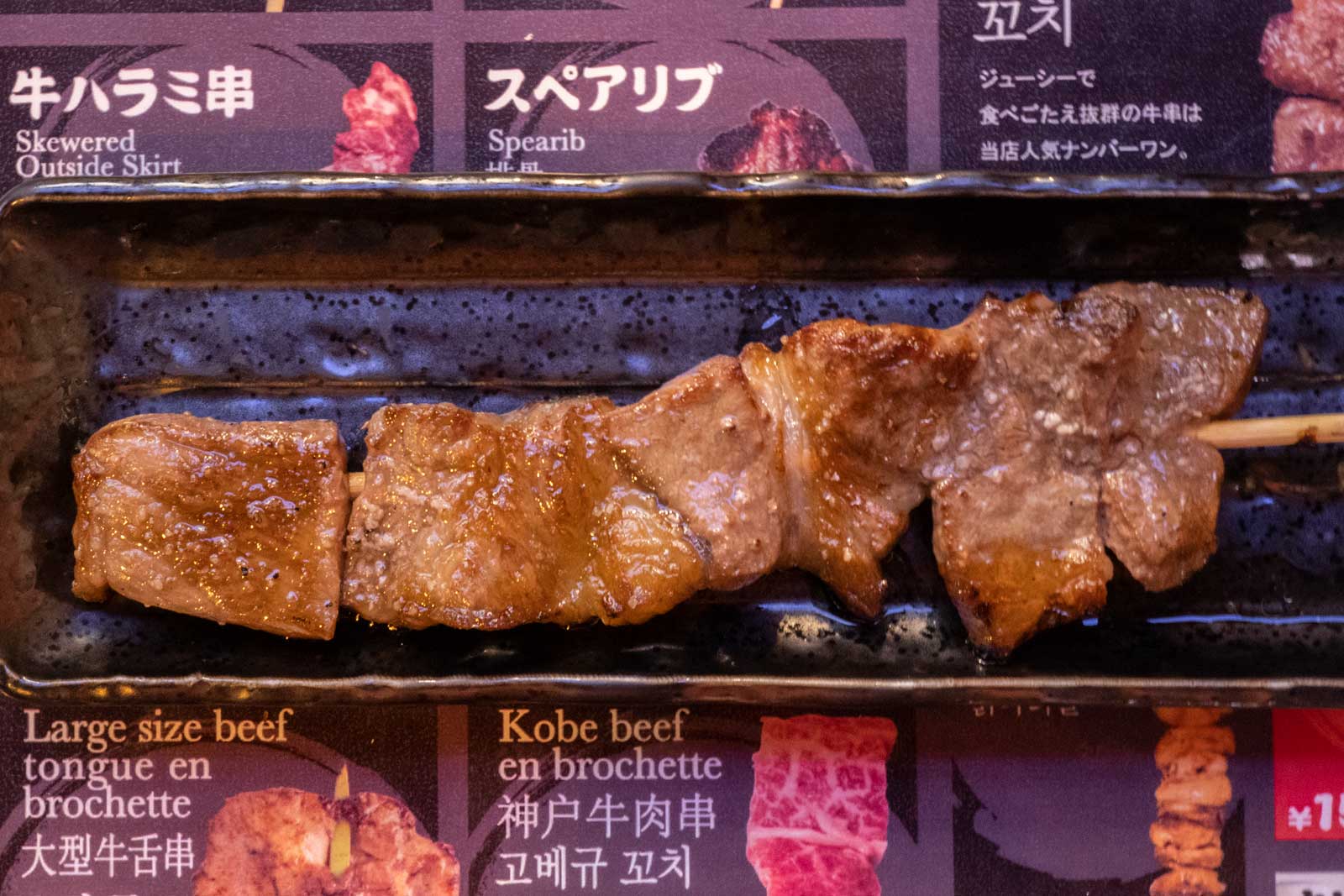
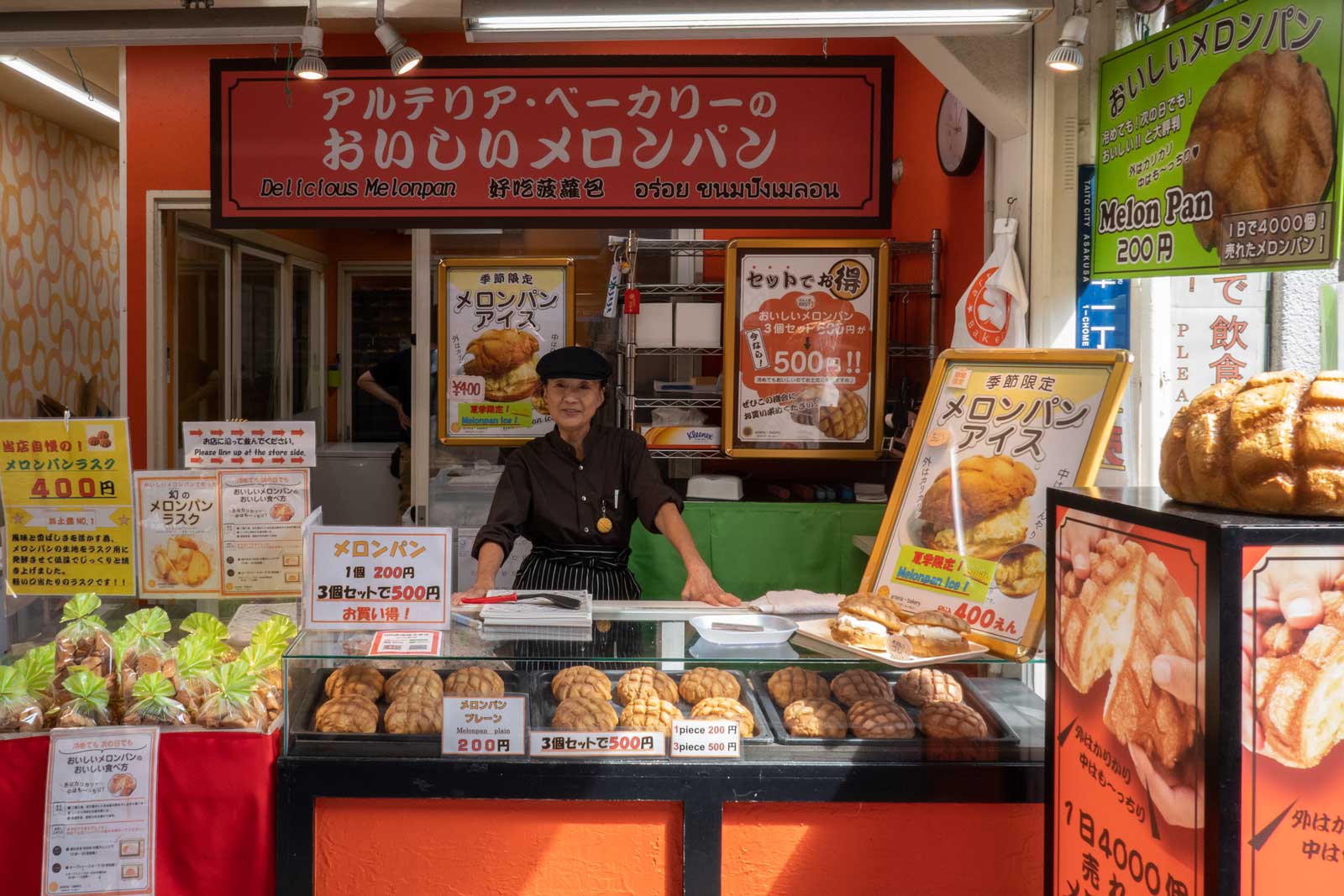
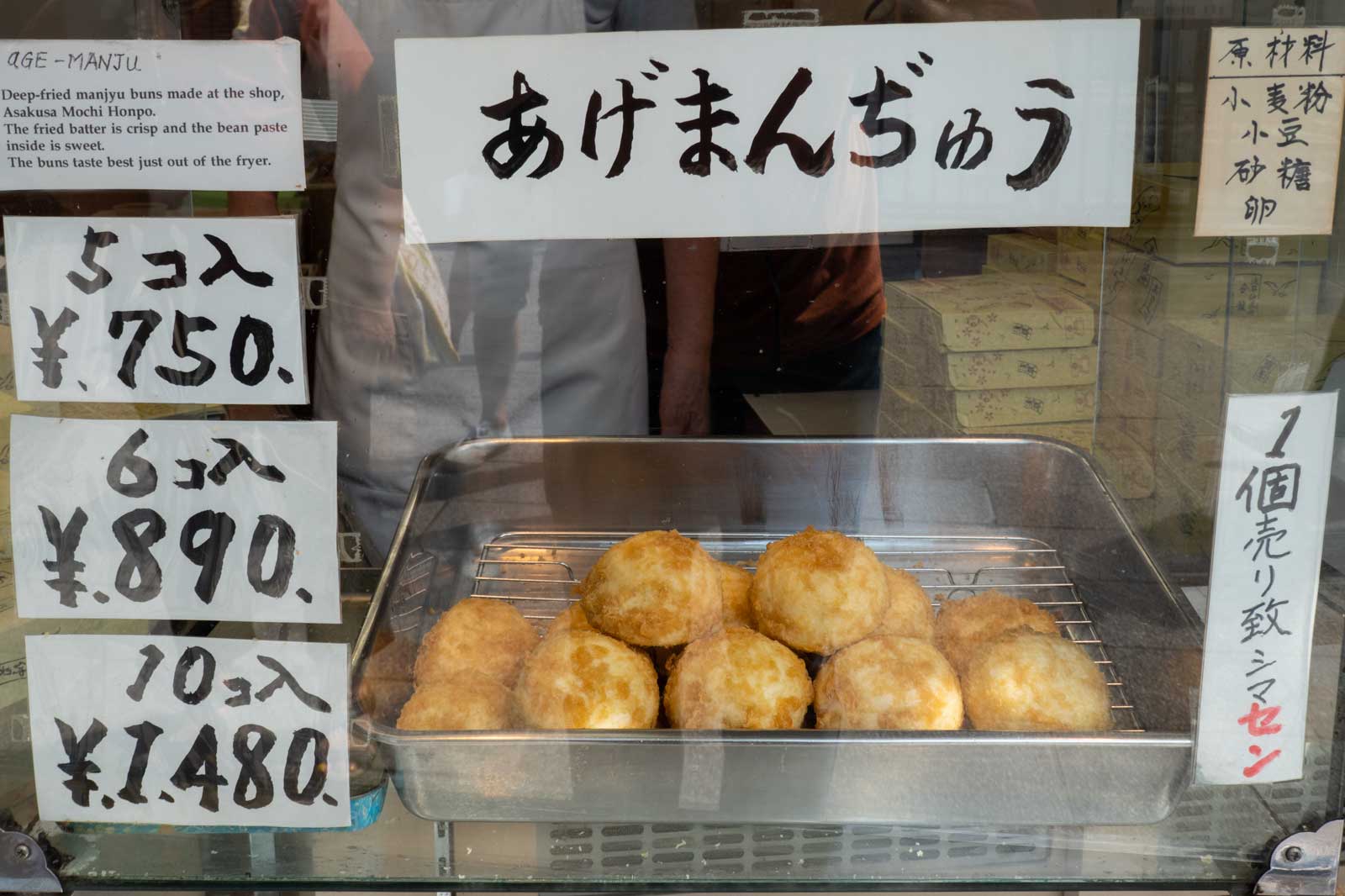

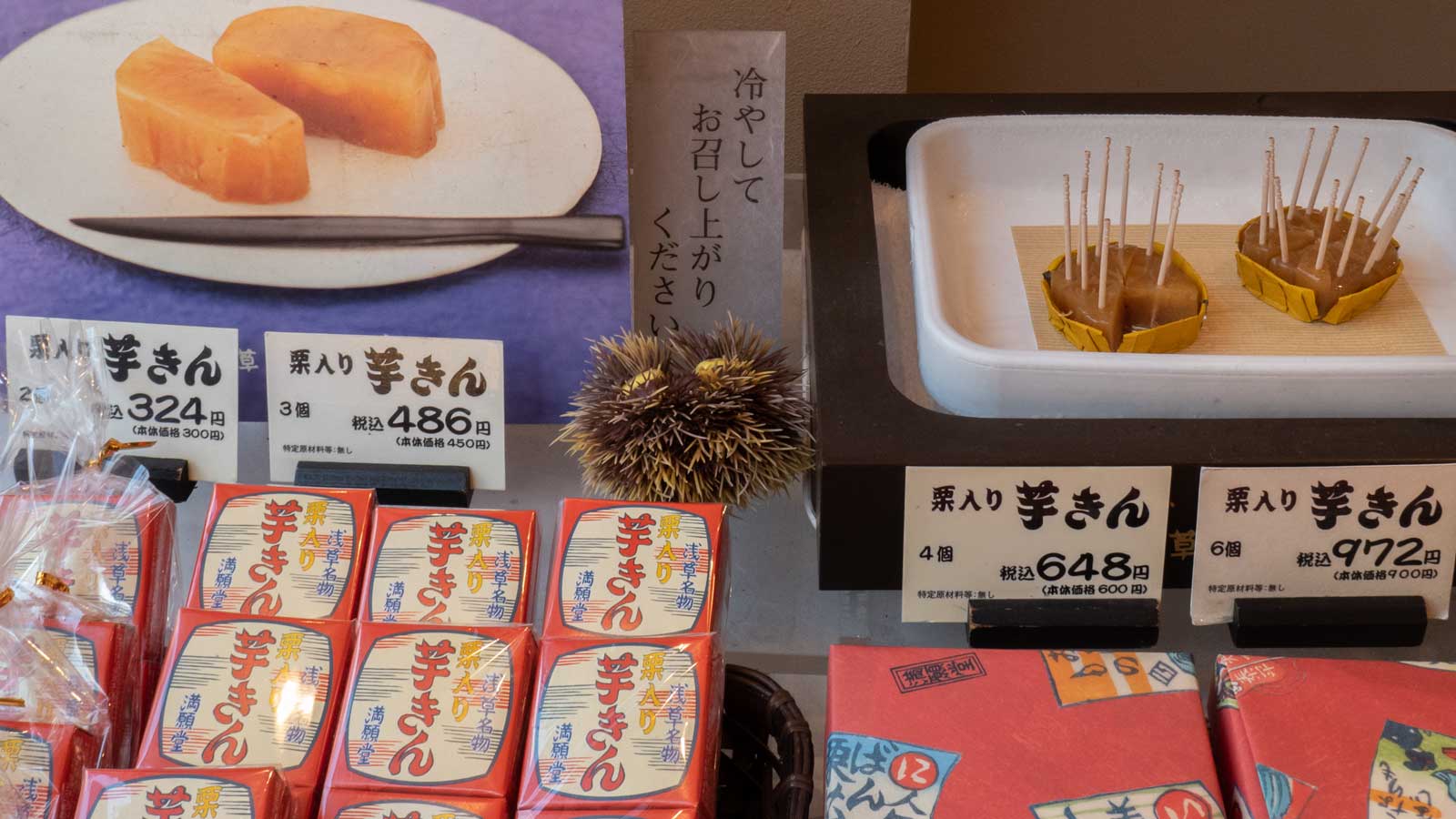
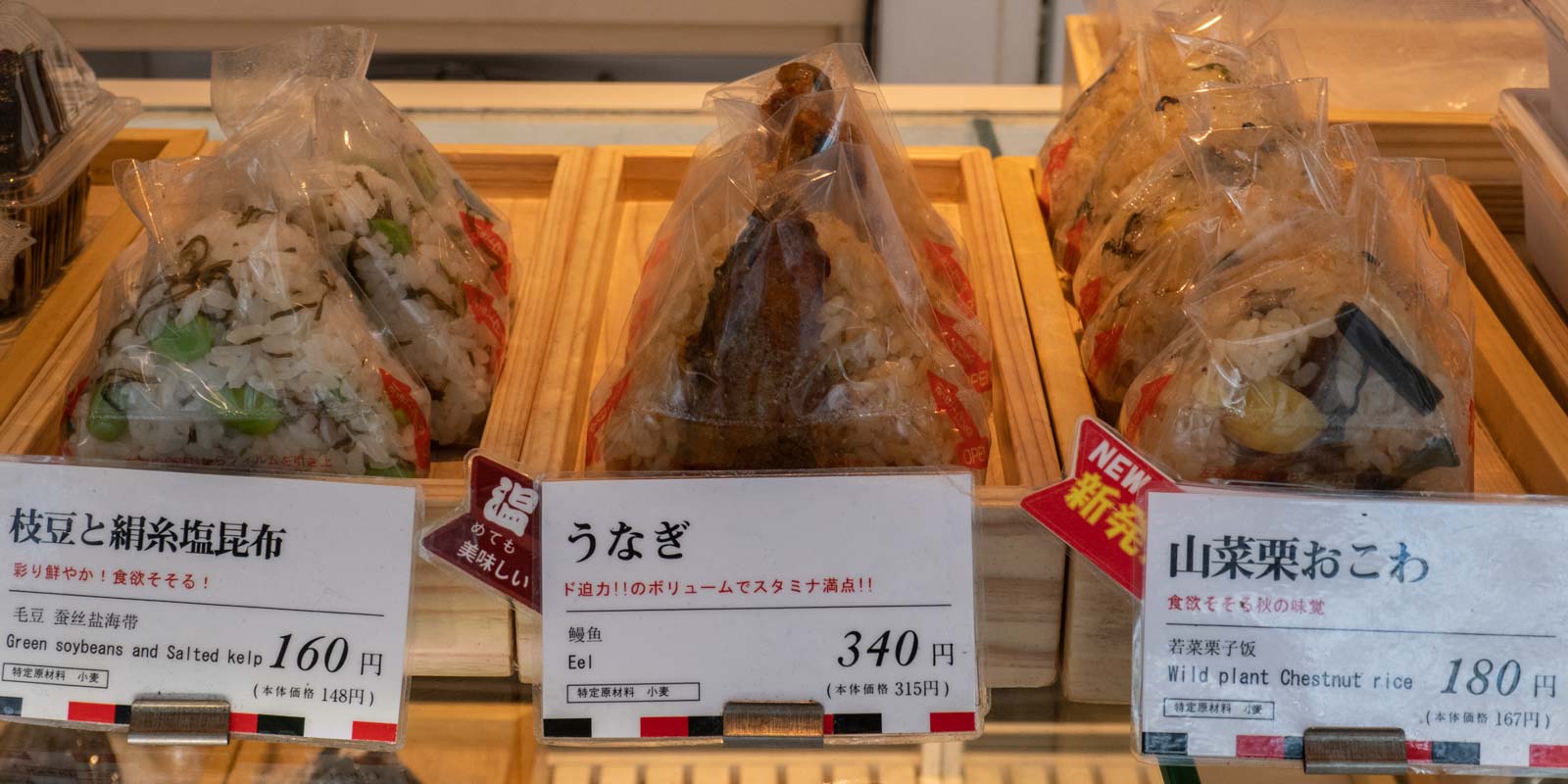
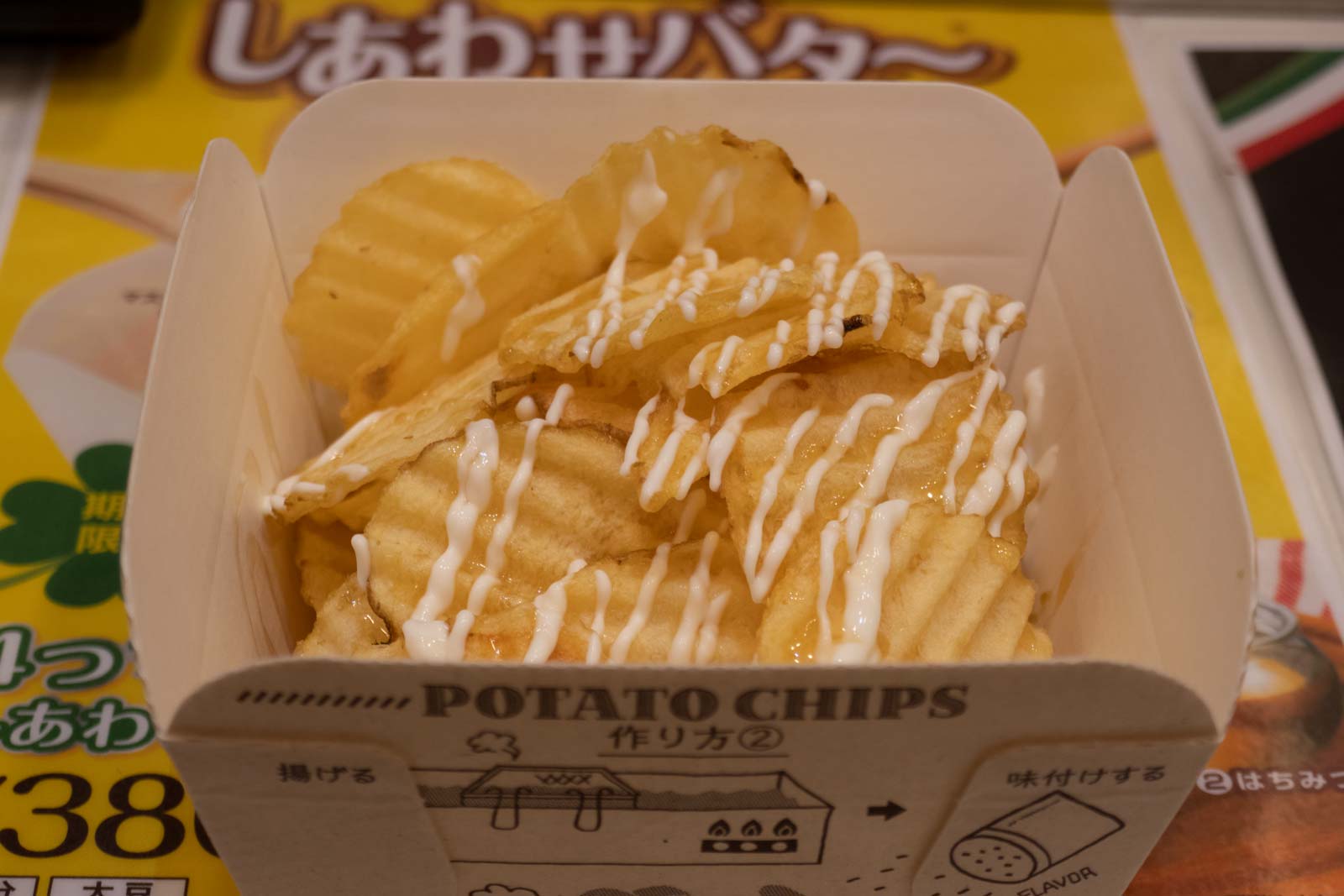

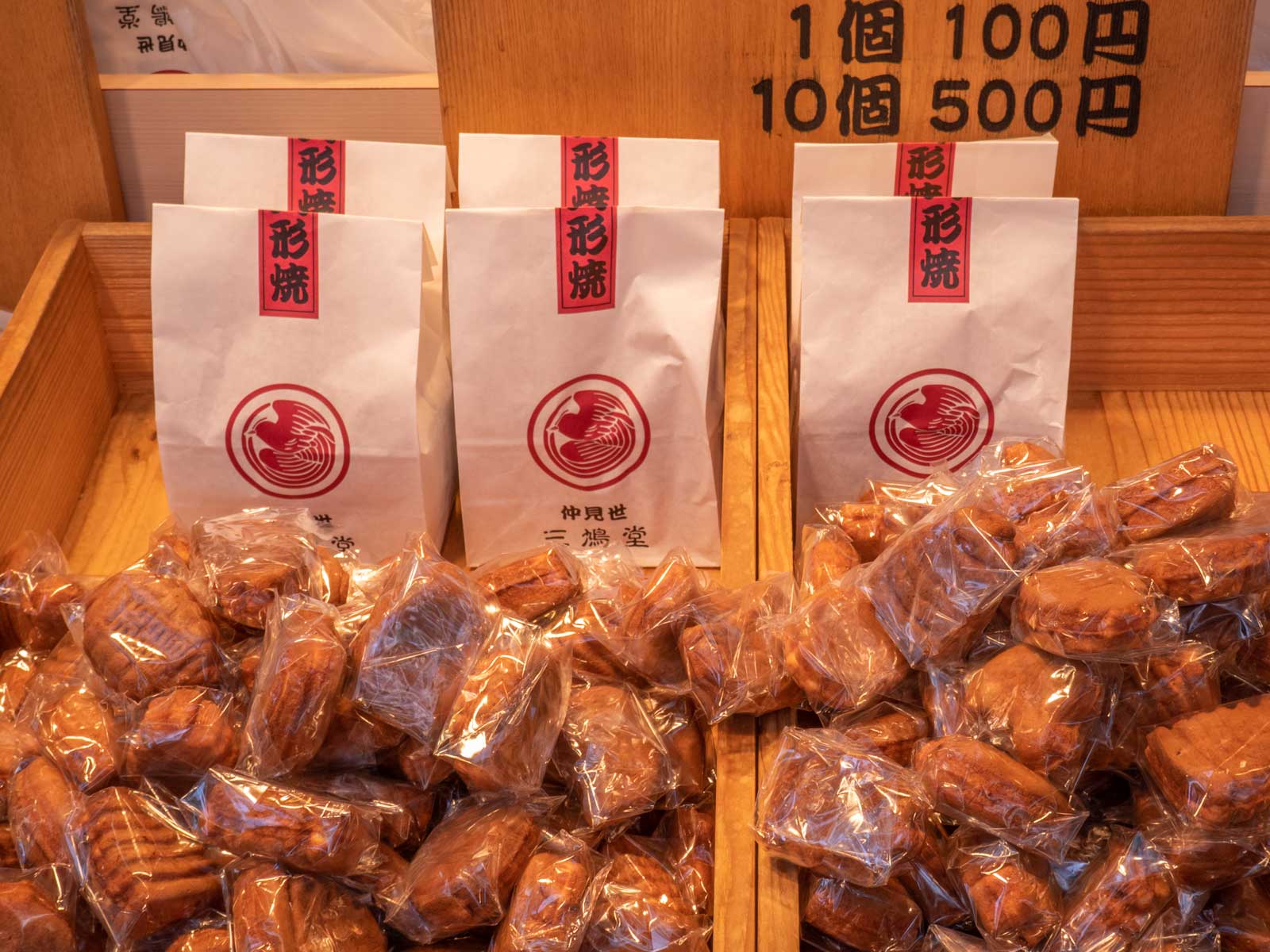






I am obsessed with ice cream, so Creamia would be the first snack on my Japanese street food list.
Hi Jamie. Yes, I know you love ice cream. And thanks for your suggestions in Providence!
Street food is always exciting, no matter where I find myself travelling. There is no better way to appreciate the very essence of the cuisine in a region or country that indulging in local street food.
I agree. And in Japan it’s safe. Singapore as well!
What a fun post! I’ve never been to Japan, and apparently I know nothing about Japanese street food, because the only thing I recognized were the fish-shaped waffles (thanks, Instagram lol). But some of these sound so good!! Like melonpan – yum!! And I’m trying to imagine what cherry blossom ice cream tastes like – sounds very light and delicate. It’s interesting they serve the popcorn chicken thing cold so that you can heat it up later – I’d thing it would lose it’s crisp-ness, but maybe there’s a secret to it!
While I prefer the Taiwanese popcorn chicken, I did enjoy the Japanese version as well.
Being lucky enough to have ventured to Tokyo a few times, your list brought back many memories of the amazing street food you can find in Tokyo! one of my all time favorites has to be ningyo-yaki!
Hi Joe. I absolutely love your image!
What a great list you have here. I loved reading your article and learning about the diferent japanese delicacies. So many of them I have not heard of but would like to try some day.
I try some of them at Sunrise Mart in Brooklyn’s Japan Village. It’s also known as Industry City.